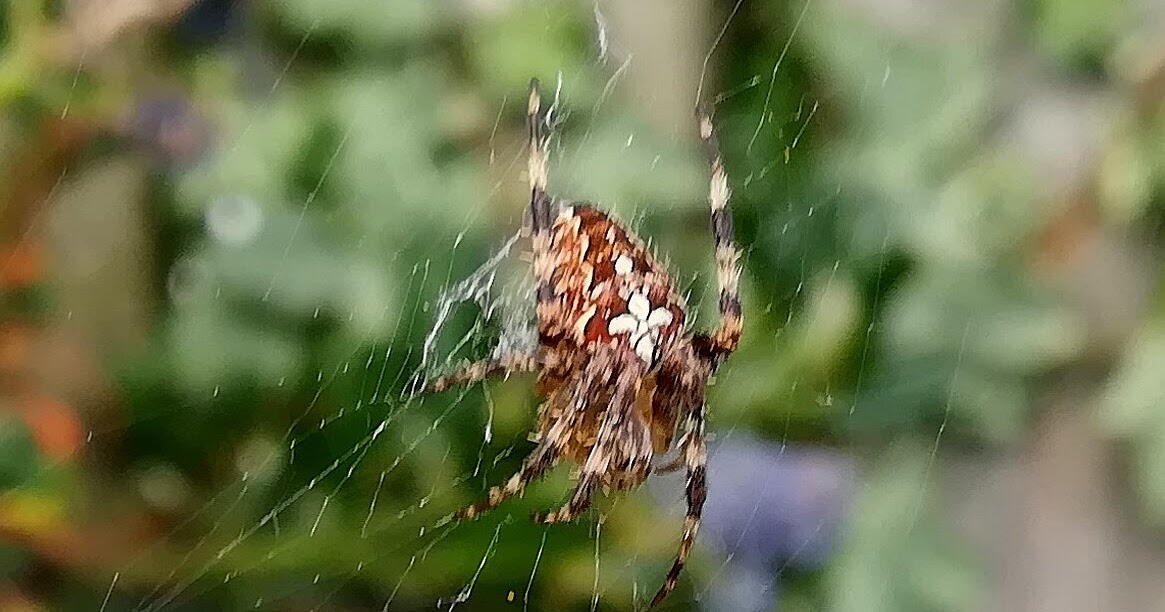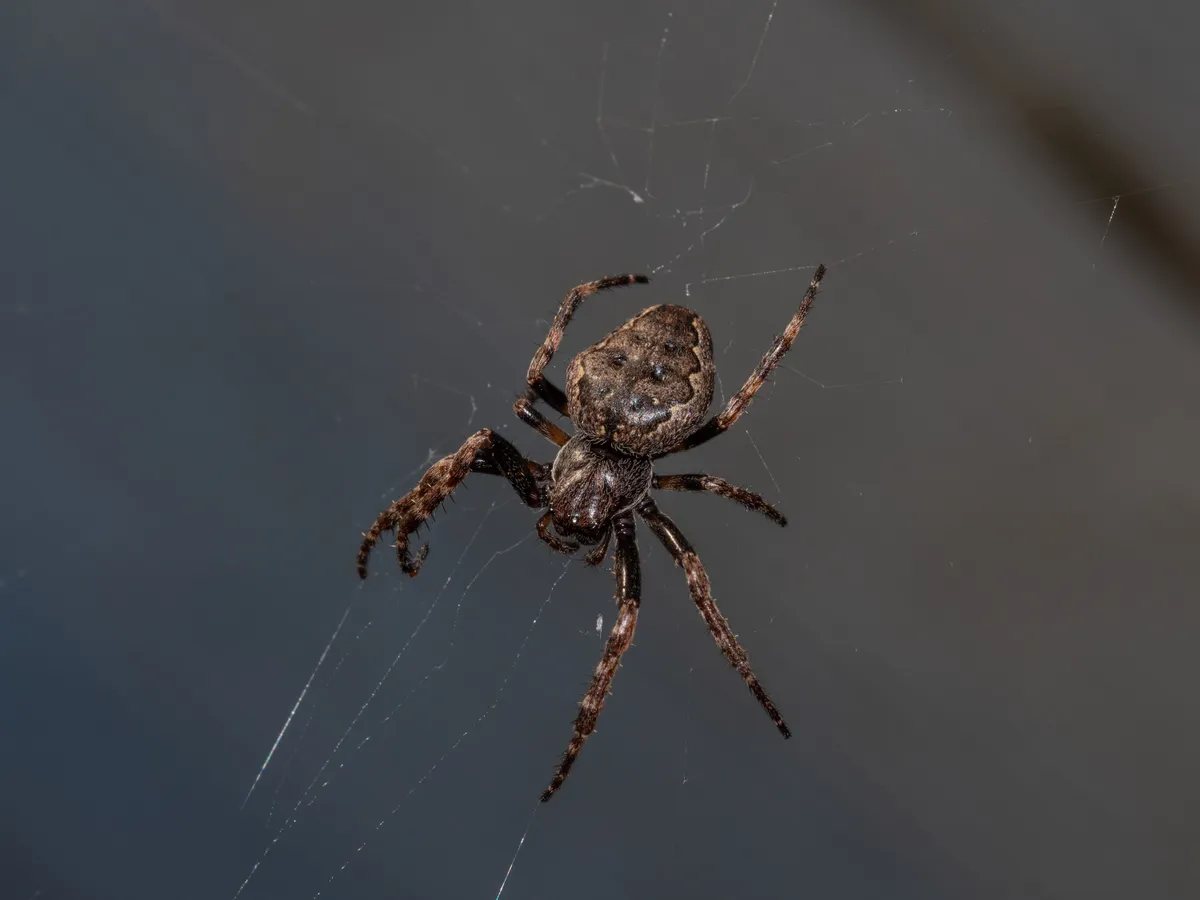During autumn and winter you may notice an influx of spiders appearing in your garden and home. Learn why this is, as well as how long they live, what they eat and common UK species with our expert guide to British spiders.
Autumn is the best season to appreciate spiders, when seasonal dew turns garden webs into a glittering display.
Spiders are more visible in autumn because most of them are looking for a mate, having reached full maturity towards the end of their commonly one-year life cycles.
Love them or loathe them, many garden spiders may be found inside the house as autumn progresses. If youre not keen on spiders, the smell of citrus such as lemon or orange is thought to repel them in a wildlife-friendly way.
The cross orbweaver spider, scientifically known as Araneus diadematus, is a fascinating eight-legged creature that bears a unique marking resembling a fleur de lis or heraldic cross on its abdomen. With its striking appearance and intricate web-spinning abilities, this spider never fails to capture people’s attention in backyards and gardens across Europe and North America.
Identifying the Cross Orbweaver
The most distinguishing feature of the cross orbweaver is the white cross-shaped pattern on its abdomen, which is formed by deposits of guanine crystals. The background color of the spider can range from pale yellow to charcoal gray.
Females are larger, growing up to 0.8 inches long, while males reach just over 0.5 inches in length. In addition to size and markings, identifying traits include:
- Long legs with specialized claws for clinging to web strands
- Orb-shaped webs up to 2 feet wide
- Prefers to build webs near vegetation
The cross orbweaver belongs to the Araneidae family of orb weaver spiders. Its striking appearance gives rise to common names like diadem spider, fleur de lis spider, and crowned orb weaver
Impressive Web Architects
The cross orbweaver female is a skilled web builder, constructing large, intricate orb webs with amazing precision. The vertical and horizontal silk threads form concentric circles that act as snares for flying insects.
Building the web can take hours as the spider carefully lays the foundation lines and then fills in the orb structure The spider sits head down in the center of the web and uses vibrations to detect trapped prey With its long front legs, it swiftly wraps the prey in more silk before carrying it back to the center for consumption.
Cross orbweavers tend to build their webs in similar locations day after day often choosing spots like porches shrubs, tree branches and garden edges. The web serves as both a feeding site and daytime haven for the shy spider.
Habits and Habitats
Cross orbweavers have a widespread distribution across Europe, Asia and North America. They are most noticeable in late summer and fall when mature females construct their spectacular webs.
These spiders overwinter as juveniles or eggs before reaching maturity in spring. Females die soon after laying eggs in the fall, while males may continue to live for several months.
In rural areas, the cross orbweaver inhabits meadows, fields, and forest clearings. But it also adapts readily to urban environments like suburbs and city parks.
Harmless to Humans
Despite their imposing appearance, cross orbweavers are not considered dangerous to humans. They rarely bite unless severely threatened or provoked.
The venom is mild and non-toxic, so bites may cause slight pain and temporary redness but no serious effects. The best approach is to respect the spider’s space and admire its artistic web from a distance.
For gardeners and nature lovers, the cross orbweaver is a beneficial species that helps control insect pests without harming plants. As a non-aggressive spider mostly active at night, it peacefully coexists with humans.
A Majestic Web Artist
With its ornate web dangling between branches or stretched across a garden archway, the cross orbweaver puts its artistry on display for all to see. The striking fleur de lis marking is like the spider’s signature flourish on a masterpiece.
So next time you come across one of these fascinating web spinners, take a moment to appreciate its delicate and intricate design. Looking closely at the cross orbweaver gives us a new perspective on spiders as complex creatures with their own unique beauty in the natural world.

Bridge orb-weaver (Larinioides sclopetarius)

Elegantly marked, this has velvety grey-and-white colouring (brown hints sometimes) and an undulating white line down each side of its abdomen. Its webs are over water on bridges, lock gates and wharves. Head and body up to 14mm in length.
Walnut orb-weaver (Nuctenea umbratica)

Glossy dark-brown above, fawn at edges, separated by undulating pale line on each side of abdomen. Broad and distinctively flattened, it hides in cracks in fenceposts or under tree bark by day and spins web at night. Body up to 15mm long.
Baby funnel-web spiders everywhere!
FAQ
Is a cross orbweaver spider poisonous?
However, there is no reason to fear these autumnal creepy crawlies: they are completely harmless.
Is the orb weaver spider poisonous?
Orb weavers are not poisonous to humans and are docile when you do come across one, but it is best to leave them on their web when possible, as they do not have good eyesight and the ground is a dangerous place for them.
Is the arrowhead spider poisonous?
The arrowhead spider is a harmless species of spider to humans.
What does the cross spider symbolize?
Cross Spider – Araneus diadematus
The species epithet diadematus refers to a diadem, “A jeweled crown or headband worn as a symbol of sovereignty.” It’s easy to see the resemblance of the abdominal markings to a crown worn by English royalty, or at least royalty adhering to the Christian faith.
